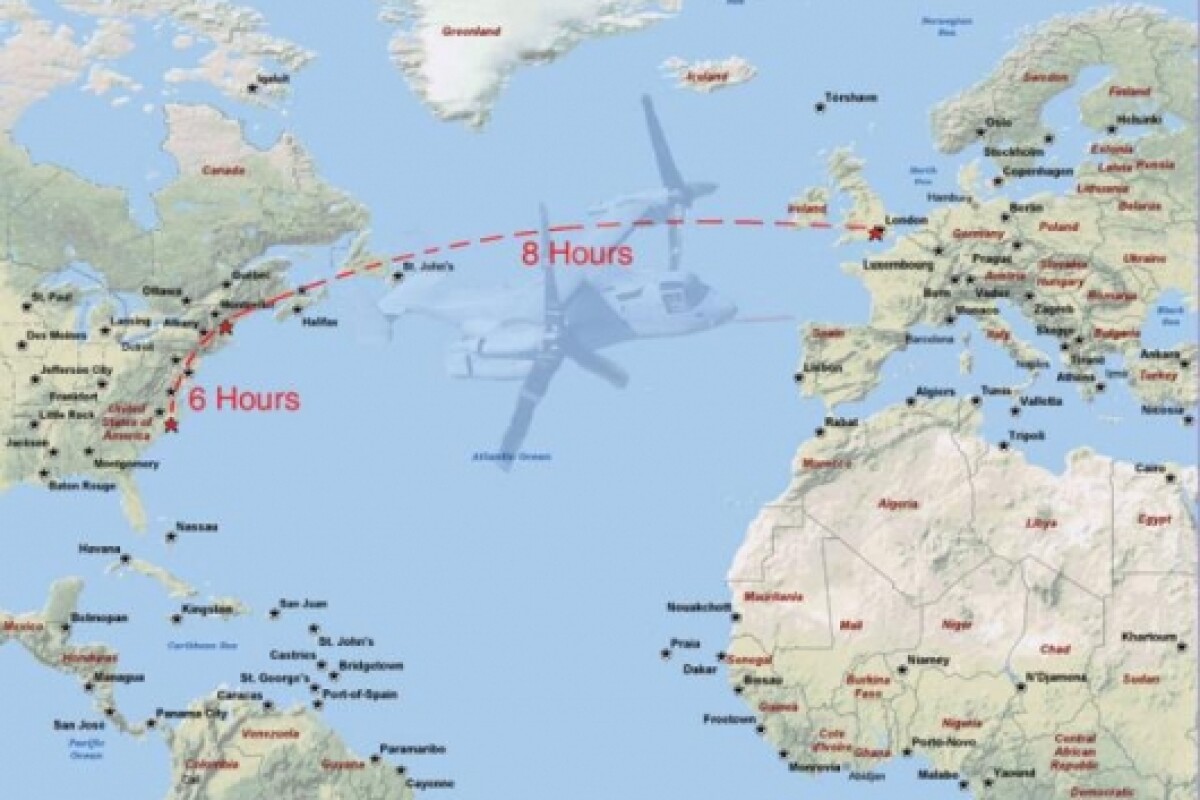August 9, 2006 Two Bell Boeing MV-22 Ospreys recently visited the United Kingdom for the Royal International Air Tattoo (RIAT) and Farnborough International Air Show (FAS). Though the demonstration flights at RIAT and FAS were conducted by Bell Boeing pilots, the flights to and from the United States were part of an overall long range operational evaluation being conducted by the US Marines. The Osprey is such a new animal, with its dual helicopter and long-range plane capabilities that the Marines are busy “writing the book" on long-range deployments and have been conducting a series of long-distance flights to develop tactics,techniques and procedures for long-range, over-water movements of MV-22s, in preparation for the first combat deployment in 2007. Unlike conventional rotary wing aircraft, which must be transported into overseas theaters of operation aboard amphibious shipping or heavy lift transport planes, the V-22 can self-deploy thousands of miles over water to get itself to the fight.
That ability was proven during operational evaluation in 2005, when the Osprey demonstrated a projected range of more than 2,600 nautical miles on a single aerial refueling. The MV-22 can be configured with up to three mission auxiliary tanks in the cabin to enable extreme ranges.
In preparation for the flight to London, Marine Tiltrotor Operational Test and Evaluation Squadron 22 (VMX-22) launched two Ospreys from their home at Marine Corps Air Station New River, N.C., , landing at Marine Corps Air Station Miramar, California, nine hours and 2,100 nautical miles later. They returned to New River several days later, making that flight in just eight hours. Altitudes on the flights ranged from14,000 to 16,000 feet, with sustained ground speeds between 240 and 300 knots.
For the Transatlantic flight, the Ospreys departed Marine Corps Air Station New River, NC, and flew to Goose Bay, Newfoundland, where the crews remained overnight. The next day they departed Goose Bay and flew across the Atlantic to Farnborough with two Marine Corps KC-130J tanker aircraft from VMGR-252. Following the RIAT and FAS, the aircraft will return to MCAS New River via Goose Bay.
The Marine Corps' purpose for going to RIAT and FAS is to develop tactics, techniques and procedures for long-range, over-water movements of V-22s. VMX-22 will validate the Osprey's long-range fuel system capability and aerial refueling data, with the goal of supporting future VMM unit-level deployments.
Under the current program of record, the Marine Corps will purchase 360 MV-22s for missions, including amphibious assault, ship-to-objective maneuvers, and sustained operations ashore. The Navy is also slated to get 48 MV-22s, which could be used for fleet logistic support, and search and rescue.
The Air Force Special Operations Command will acquire 50 CV-22 variants, with enhanced capabilities tailored for their unique mission requirements. The CV-22 will reach initial operational capability in 2009, while the Marines' variant will be ready to deploy in late 2007.












